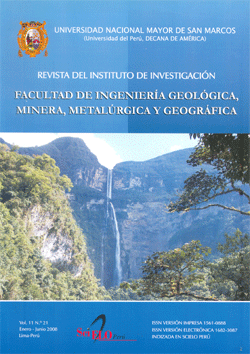Recovery of solid waste in the University City of the National University of San Marcos
DOI:
https://doi.org/10.15381/iigeo.v11i21.521Keywords:
solid wastes, economical recovery of the solid residuesAbstract
The Universidad Nacional Mayor de San Marcos has 20 faculties and 59 professional schools, with a population that exceeds an approximate number of 12,000 people who spend an average of 6 hours a day in the environments of the University City, in each school generally There is a cafeteria that students, teachers and administrative staff use, all of these people generate solid waste. One of the most serious environmental problems in today's society is undoubtedly that of the generation and management of solid waste. The large production of household garbage, furniture remains, rubble and clearing of the gardens forces the establishment of special waste collection and storage services. However, much of this waste continues to be dumped into the river and its banks, accumulates in clandestine landfills and has a serious impact on the landscape, flora and fauna of the place. What is intended to be done with this study is to verify if the expectations of economic recovery of solid waste are appreciable, and then carry out solid waste management as other private educational institutions have and implement it in our university and become an institution framed within the decade of education for sustainable development, thus maintaining clean and healthy environments, as well as achieving the participation of the entire community of San Marcos, which makes up our four-hundred-year Dean University of America.
Downloads
Published
Issue
Section
License
Copyright (c) 2008 Godelia Canchari Silverio, Oswaldo Ortiz Sanchez

This work is licensed under a Creative Commons Attribution-NonCommercial-ShareAlike 4.0 International License.
AUTHORS RETAIN THEIR RIGHTS:
a. Authors retain their trade mark rights and patent, and also on any process or procedure described in the article.
b. Authors retain their right to share, copy, distribute, perform and publicly communicate their article (eg, to place their article in an institutional repository or publish it in a book), with an acknowledgment of its initial publication in the Rev. Inst. investig. Fac. minas metal cienc. geogr.
c. Authors retain theirs right to make a subsequent publication of their work, to use the article or any part thereof (eg a compilation of his papers, lecture notes, thesis, or a book), always indicating the source of publication (the originator of the work, journal, volume, number and date).






